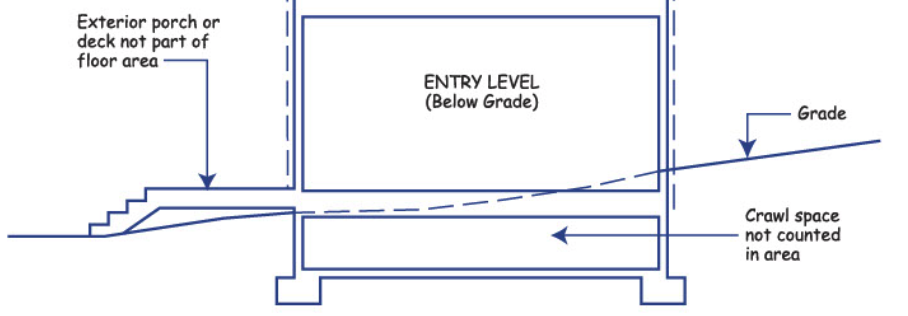What is Gross Living Area?
One of the many challenges homeowners face is not knowing the accurate square footage of the home they are looking to sell or the prospective home they are looking to purchase. A home’s gross living area (GLA) can be difficult to determine, and all too often what is reported in public records differs from what actually exists.
An inaccurate gross living area (GLA) can throw off a home’s price per square foot. Larger homes with a more complex floor plan are challenging to measure alone. If a home is significantly larger or smaller than what is recorded in the public record, that discrepancy can put buyers, sellers, and realtors in a problematic position.
GLA Standards of Measurement
There are primarily two standards of measurement that most appraisers and real estate professionals adhere to for determining GLA: The American National Standards Institute (ANSI) and Fannie Mae Guidelines. The American National Standards Institute (ANSI) is responsible for identifying a single, consistent set of voluntary standards, and ANSI standards have been adopted by most MLS services and real estate agents. Fannie Mae guidelines are developed by the agency to create a standard that must be adhered to for the purchase of loans.
Above Grade vs. Below Grade
To determine the gross living area, we must begin by identifying what areas of the home qualify to be considered part of the GLA. This starts with defining above vs. below grade living area.
Per Fannie Mae:
For units in a condominium or cooperative projects, the appraiser should use the interior perimeter unit dimensions to calculate the gross living area. In all other instances, the appraiser should use the exterior building dimensions per floor to calculate the above-grade gross living area of a property. Only finished above-grade areas should be used – garages and basements (including those that are partially above-grade) should not be included. We consider a level to be below-grade if any portion of it is below-grade – regardless of the quality of its “finish” or the window area of any room. Therefore, a walk-out basement with finished rooms would not be included in the above-grade room count.
Per ANSI:
The above-grade finished square footage of a house is the sum of finished areas on levels that are entirely above grade. The below-grade finished square footage of a house is the sum of the finished areas on levels that are wholly or partly below grade.

Exceptions to Above Grade vs. Below Grade Standards
As you can see, both ANSI and Fannie Mae are consistent in their requirement that GLA is entirely above grade. Fannie Mae, however, does allow for some exceptions to this rule. Fannie Mae states:
The appraiser may deviate from this approach if the style of the subject property or any of the comparables does not lend itself to such comparisons. However, in such instances, he or she must explain the reason for the deviation and clearly describe the comparisons that were made. So long as the appraiser can define consistent comparables with below grade and above grade areas, and they give reasonable cause, below grade areas can be included.
One example in our local market when one of these exceptions may apply is with an earth home property. With these types of properties, all of the living areas is below grade.
Another example may be properties with a walk-out basement that back to a lake. For this type of property, it is often more desirable for the main living area to be on the lower level due to its lake access.
So, while Fannie Mae does allow some exceptions, in general, both ANSI and Fannie Mae agree that if any portion of the level is below grade it cannot be considered part of the gross living area of the home.
For more about below grade living area, see Authority Appraisals’ Home Measurement Services.